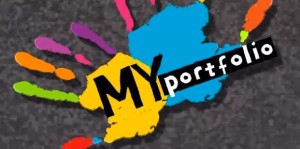What is Core about Portfolios

What is CORE about e-Portfolios –
The idea that a portfolio can keep the evidence of a student’s work and learning has certainly been around for a long time. With the advent of digital learning and the resources that an integrated digital learning solution can provide, maintaining an e-Portfolio has many benefits.
There are some “CORE” functionalities of e-Portfolios, and the idea that all portfolios are built upon some implementation of this “CORE” is an important concept to keep.
In e-Portfolios, these things need to be a part of the basic processes used to keep and maintain an effective history of learning. We are, after all, finding ways to document the evidence of learning.
“C” – Collect – the e-Portfolio must provide a place for a student to collect learning – whether that learning is used in the final presentation of the e-Portfolio, or whether that learning represents steps along the way. As a part of the “Collect” function, a good learning e-Portfolio will provide for both blogging and archiving functions. The blog is a very good way for students to rehearse, or to collect, learning and ideas. This is a reflective and a planning place in which the student can imagine learning, create drafts, communicate with others, or simply write as preparation for later work. Additionally, the “collect” function must create a kind of “pre-archive” place for students to store work. This allows the student to show drafts of work being done and to track revisions. In the digital world of the 21’st century, this is necessarily a web-based and multi-media environment.
“O” – Organize – the e-Portfolio must provide a way for students to organize their work by allowing them to create necessary folders and directories to best display their work. Some students will want to organize their work chronologically; others will want to organize the work topically, and yet others will want to organize the work based on personal choice and relevancy. Organization of work is important to learning because it can reveal the ways in which the student understands and creates a schema about the discipline. This organization is fundamentally a metacognitive act as it shows the ways in which the student thinks about the learning.
“R” – Learning is mundane if not for reflection. Reflection on learning may be the most important feature of any e-Portfolio implementation. It is in the reflective activities of the e-Portfolio where a student can analyze and comment on the work itself, and the ways that the work meets the standards and expectations of the school. Often this is about the ways in which the work can meet the graduation requirements, and what the student is in fact doing in this process is finding and exploring the ways in the learning and activities of the portfolio meet the established criteria for success. On the other hand, we all learn by failing, and this part of the e-Portfolio experience can certainly be a way to reflect on failure as a pretext for next efforts.
“E” – Evaluation – Evaluation is an important part of the e-Portfolio process. It’s also the part that should involve others. While the student may be involved in collecting the work, organizing the work, and reflecting on the work – an evaluative commentary is important to validate the work and point out steps to improvement. Understanding the role that “critical friends” can play in the evaluative sequence is important, and the idea that these critical friends can include teachers, other students, parents, and community members is also an important consideration. Evaluation can originate from several sources and any institution really interested in learning will explore all the resources available to create a learning culture.
And, a “learning culture” is what it’s all about anyway. The successful school will create a culture about learning that validates the student, but also validates the work being done as progress toward a goal – that goal being an educated, literate, numerate, and compassionate society.
